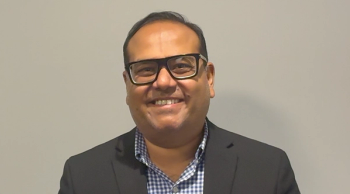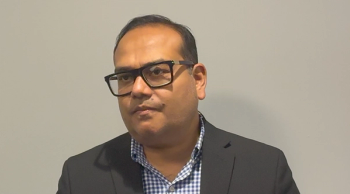
Oncology NEWS International
- Oncology NEWS International Vol 11 No 1
- Volume 11
- Issue 1
Sestamibi Imaging Detects Cancer in Both Dense and Fatty Breasts
CHICAGO--Scintimammogra-phy, a nuclear medicine procedure developed in the early 1990s, has potential as a diagnostic tool for identifying breast cancer in women whose disease hides within dense tissue, said Janet Baum, MD, a radiologist at New England Deaconess Hospital, Boston
CHICAGO--Scintimammogra-phy, a nuclear medicine procedure developedin the early 1990s, has potential as a diagnostic tool for identifyingbreast cancer in women whose disease hides within dense tissue, said JanetBaum, MD, a radiologist at New England Deaconess Hospital, Boston.
In a preliminary trial at 42 medical centers, Tc-99msestamibi breast imaging was equally accurate at predicting malignanciesin dense breasts and in fatty breasts. Sestamibi breast imaging had highpositive and negative predictive values for cancer that were not affectedby breast density, Dr. Baum reported at the annual meeting of the RadiologicalSociety of North America (RSNA).
Dr. Baum also suggested that Tc-99m sestamibi breast imaging might refinebiopsy protocols by eliminating the routine practice of sampling all palpablebreast nodules when a significant number turn out to be benign.
However, Edward Sickles, MD, chief of mammography, University of California,San Francisco, expressed concern that the sensitivity of sestamibi breastimaging "didn't come close to the 95% to 98% level we generally requireto call a lesion exempt from biopsy."
Sensitivities achieved with scintimam-mography were no higher than 82%for palpable and nonpalpable lesions. "It is dangerous to eliminatea biopsy when your own accuracy is not even 90%," Dr. Sickles said.
The multicenter trial included 563 women, 315 with palpable nodulesand 248 with nonpalpable mammographic abnormalities. Women were classifiedas having fatty breasts if mammography showed tissue that was composedalmost entirely of fat or contained numerous vague densities. Women wereconsidered to have dense breasts if mammography showed extremely or heterogeneouslydense tissue.
Forty-eight percent of the women with palpable lesions had a malignancyat biopsy. Scintimammographic findings in these women were equally sensitiveto breast cancer in dense tissue (80% sensitivity) and fatty tissue (79%sensitivity).
Overall accuracy for sestamibi breast imaging was 79% for palpable nodulesand 80% for nonpalpable abnormalities. Both positive and negative predictivevalues were similar for women with palpable lesions (77% and 82%, respectively)and nonpalpable lesions (76% and 81%, respectively).
Scintigraphic findings could contribute to the decision to biopsy ratherthan follow. When mammography of a woman with extremely dense breasts showedonly microcalcifications in the upper inner quadrant of the left breastcorresponding to a palpable nodule, scin-timammography revealed increasedTc-99m sestamibi uptake indicative of tumor in that area. Scintimammographyalso detected lesions as small as 6 mm.
"Sestamibi showed good overall diagnostic accuracy, and it wasindependent of breast density," Dr. Baum said. "It thereforemay make a useful contribution to a balanced breast evaluation programthat includes mammography, magnetic resonance (MR) imaging, and ultrasound."
She said that sestamibi imaging should be considered as part of thediagnostic armamentarium to evaluate breasts that are mammographicallydifficult to image, "particularly when the ultrasound capability inan institution is not as good as you would like or a patient cannot havean MR or MR is not available."
DuPont Pharma Radiopharmaceuticals, a division of the DuPont Merck PharmaceuticalCompany, which sponsored the research, has filed a supplemental New DrugApplication for use of Tc-99m sestamibi for breast imaging. The productis currently marketed for use in heart imaging.
Articles in this issue
almost 24 years ago
ODAC Sends Mixed Message on New Gliadel Wafer Indicationalmost 24 years ago
ONCC Certification Test Results Are Announcedalmost 24 years ago
Rituximab Ups Survival in Aggressive and Indolent NHLalmost 24 years ago
Topotecan Used in Aggressive Front-Line Therapy for SCLCalmost 24 years ago
Depsipeptide Shows Activity in T-Cell Lymphomaalmost 24 years ago
FDG-PET Useful in Newly Diagnosed and Recurrent NSCLCalmost 24 years ago
Adjuvant Anastrozole Superior to Tamoxifen in Huge ATAC Breast Cancer Trialalmost 24 years ago
ODAC Backs Adding HER-2 DNA Test to Herceptin Package Insertalmost 24 years ago
FDA and VA Plan Joint AIDS Studyalmost 24 years ago
Breast Conservation Increases With On-Site Radiation UnitNewsletter
Stay up to date on recent advances in the multidisciplinary approach to cancer.




















































































